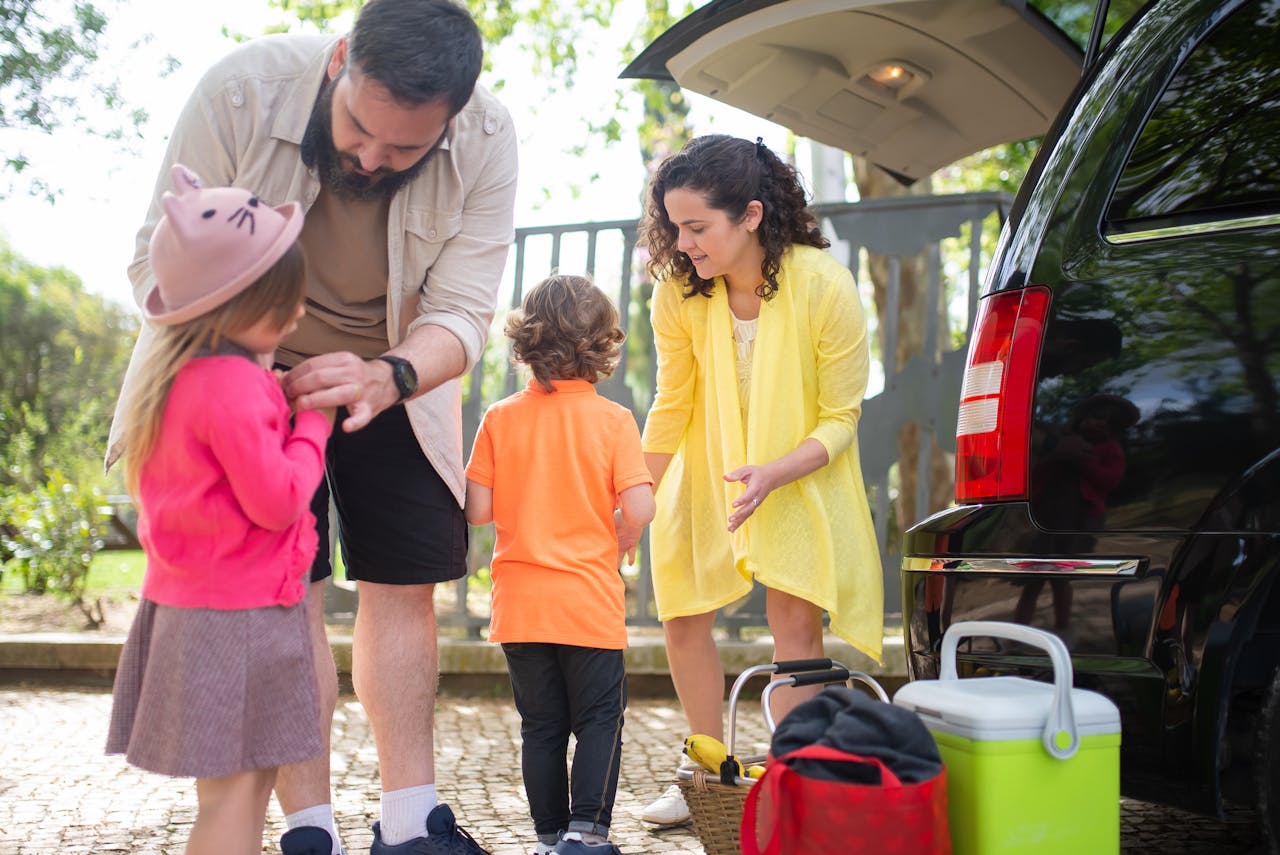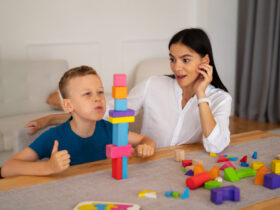Nature getaways are incredible for families, and you probably already know the benefits: fewer screens, more movement, deeper bonding, and actual eye contact. Research even shows that children who regularly spend time outdoors have better physical, mental, and emotional health, and they’re even able to learn better. But none of that makes packing any easier.
The idea of a peaceful, screen-free family escape sounds great—until you’re trying to figure out how to pack for three kids who all need different shoes, snacks, and emotional support items. Whether it’s your first time heading out with a toddler or you’ve got multiple kids in the mix, packing for nature getaways can feel more stressful than the trip itself. Because it’s not just about remembering the essentials—you need to organize in a way that doesn’t lead to constant rummaging or regretting what you left behind.
This guide breaks down exactly how to prepare, from what health items to take to which kid-friendly gear actually earns the backpack space. You’ll also find smart ways to stay organized when you’re off the grid, whether you’re camping close to home or boarding a riverboat deep in the jungle. Because if you’re going to take the time off, you want the trip to be smooth, not chaotic.
Start With Categories, Not Items
This might sound obvious, but too many parents dive straight into item lists and wind up duplicating or missing stuff. Instead, set categories first: Health,
- Clothing,
- Sleep,
- Food/snacks,
- Gear,
- And entertainment.
Once you’ve got that structure, filling it will become pretty much mechanical, and most importantly, much faster.
Make sure to put the list somewhere visible for a few days before the trip because there’s a high chance you’ll remember random items at 6 a.m. or while brushing teeth. Write down those. Don’t trust memory.
Health and Safety First, Always
Whether you’re planning to hike Banff’s family-friendly trails or you’re going camping off-grid, health gear needs to lead the packing list. Basic first-aid is a given, but it’s not enough. You should add:
- Electrolyte powder (one kid with a stomach bug can ruin your entire trip),
- Benadryl for bites or allergic reactions,
- Kid-safe bug spray and broad-spectrum SPF,
- Thermometer,
- Any prescriptions in waterproof pouches, ideally with a digital photo backup of each label.
If you’re traveling internationally or on a boat, check your travel insurance for emergency access details. Write down or store offline any local or boat-side medical support numbers and assume you won’t have cell service.
Kid-First Gear That’s Worth the Space
You don’t need to pack every toy but certain things are worth the bulk. A waterproof ground mat, for example, does more than protect clothes: it can be a diaper-changing station, a snack zone, a windbreak, and a makeshift bed when your youngest needs a nap during a hike.
Also, headlamps. Kids love them. You’ll get fewer complaints when they have their “own flashlight” for nighttime bathroom trips or firefly hunting. And pack actual shoes, like light hikers, not sandals, especially if you’re going somewhere slippery or muddy (Costa Rica, Appalachian trails, or anywhere rainforest-adjacent).
If your getaway involves boats, guided trails, or humid terrain, prioritize breathable gear and quick-dry fabrics. The last thing you need is a soaked cotton outfit chafing your kid before lunchtime. Compact binoculars, rain ponchos, and anti-fog lens wipes also deserve a spot in your pack for those once-in-a-lifetime wildlife viewing moments.
For the gear itself, go modular whenever possible: packing cubes, color-coded dry bags (one color per kid, if you want to save time and your sanity), and compression sacks for clothes. You want gear that can adapt.
Clothes: Layered, Labeled, Logical
Pack light but smart. It’s less about quantity and more about versatility. Stick to lightweight, quick-dry layers. Every kid needs at least:
- 2 base layers,
- 1 fleece or puffy jacket,
- 1 waterproof shell,
- 2 pairs of shoes (one for wet, one for dry).
And label everything. If you’re going anywhere with group activities (lodges, guided tours, national park nature schools), mix-ups are likely to happen but this can prevent chaos.
A Good Snack Strategy
You don’t just need snacks; you need reliable snacks. In other words, shelf-stable, protein-balanced, low-sugar things. Why? You don’t want a meltdown at the exact moment a rare bird is spotted in the wild or when you’re trying to board a canoe.
Ideas that work:
- Roasted chickpeas,
- Shelf-stable cheese and whole-grain crackers,
- Dried fruit (but limit it—sugar highs aren’t helpful),
- Squeeze packs of nut butter.
Also, bring resealable, reusable bags because kids rarely finish anything in one go.
Activities That Travel Well
Forget the giant coloring books or puzzle boxes. Bring items that offer high play value in low space:
- Deck of cards,
- Washable window markers (great on car windows),
- Story dice or mini figurines for imaginative play,
- Compact nature guidebooks with checklists.
Some families even assign one kid per day to be the “mini guide.” Let them carry a small field notebook, check off sightings, and lead mini-discussions. It makes the trip feel participatory, not just parent-led.
What to Pack Before Cruising
Family-friendly luxury cruises are a great way to explore nature without giving up comfort. You still get wild, off-the-grid experiences, but also soft beds, clean meals, and guides who actually know how to talk to kids.
Trips like Amazon luxury cruises offer a fantastic balance for families. You’ll hop off the boat to visit remote communities, spot wildlife, and paddle through jungle waters, then return to lovely air-conditioned cabins and delicious family-style dinners. But even with the luxury setting, you still need to pack with the terrain and the kids in mind.
Plan for the following:
- Lightweight long-sleeved shirts,
- Packable rain jackets,
- Quick-dry water shoes,
- Zip-top bags or dry sacks,
- Small crossbody or waist pouch.
You want to keep it light, smart, and kid-proof, but remember, even with the comfort of family-focused cruises, your day-to-day offboard will still involve real nature. You want to pack for that mix (comfort and chaos), as that will make the trip so much smoother for everyone.
Save Time With Smart Pre-Departure Systems
And our last but highly effective hack: pack two days early, not one. Then spend the final 24 hours dealing only with things like chargers, meds, favorite blankies, and perishables, not scrambling to find swim diapers or tracking down the missing hat.
Also:
- Print or download your itinerary, don’t rely on email only;
- Screenshot maps of any hikes, cities, or ports you’ll be visiting;
- Keep a “departure bag” by the door with passports, printouts, cash, and your main day pack inside it.
That way, even if the morning is chaotic, your brain can go on autopilot while your hands deal with the rest.







